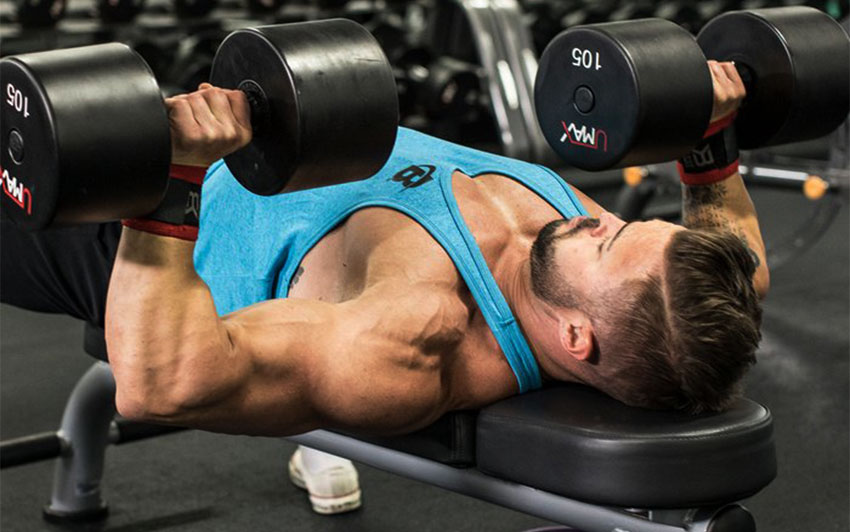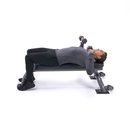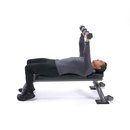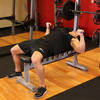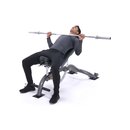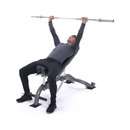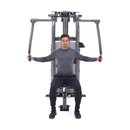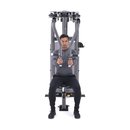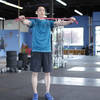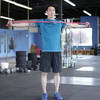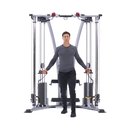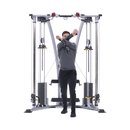ProSupps-sponsored athlete and four-time Olympia physique competitor Jason Poston is very clear on what separates this chest workout from the rest.
"The goal of this chest workout is to achieve the best pump possible," explains Poston. "We're not doing just one set and then resting; we're doing bands, supersets, dropsets—anything it takes to force more blood into the chest."
This high-volume, high-pump workout hits every angle of the chest and takes about 60 minutes from start to finish. By the end, you will have hit your chest from literally every angle possible. This is a workout you can do year-round—and tweak any way you want to suit your goal.
After putting your pecs through this punishing routine, you'll walk out the gym door with an amazing pump!
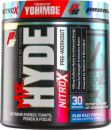
Technique Tips
Dumbbell Chest Press
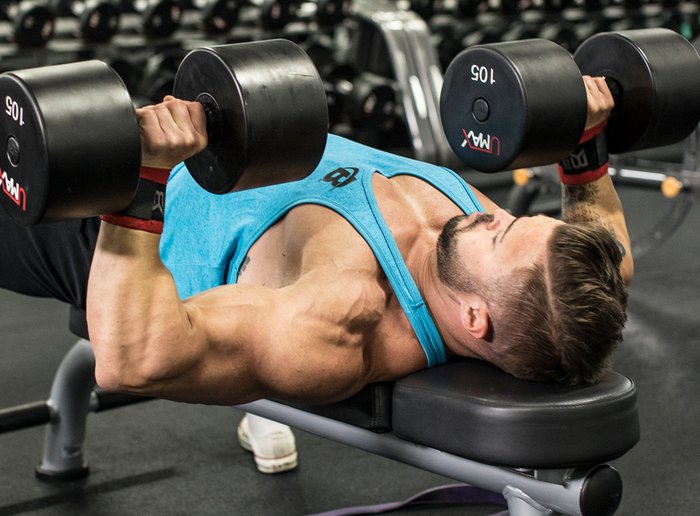
This move is great for building the chest, says Poston. First, take a nice wide stance with your feet. Then, arch your back and keep your chest up high, squeezing your pecs as you press up the weights. Keep your elbows tucked in throughout each working set.
Resistance Band Press
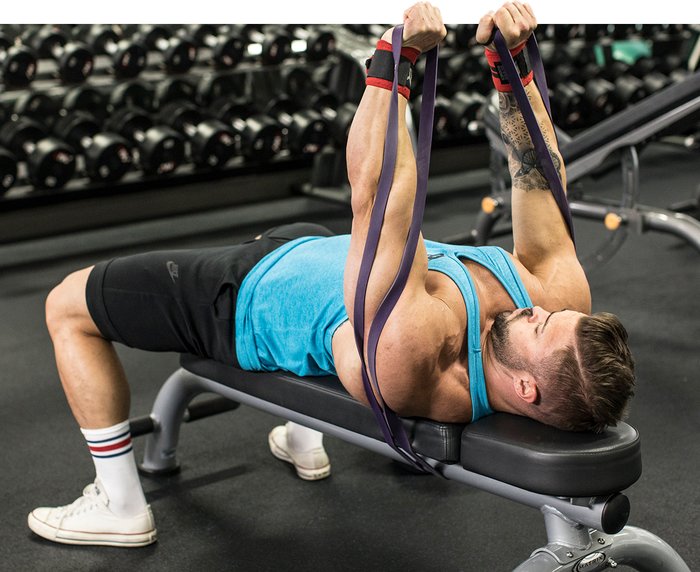
The explosive band press does a great job of hitting your fast-twitch muscle fibers, according to Poston. It's tough to move dumbbells fast enough to hit those size-building fibers, so by using bands for the second half of the superset, you'll give your chest the best chance at maximum hypertrophy and start your workout right with an awesome pec pump.
"You should be moving this band as fast as you possibly can, but at the same time staying true to your pressing form," explains Poston.
Incline Barbell Press
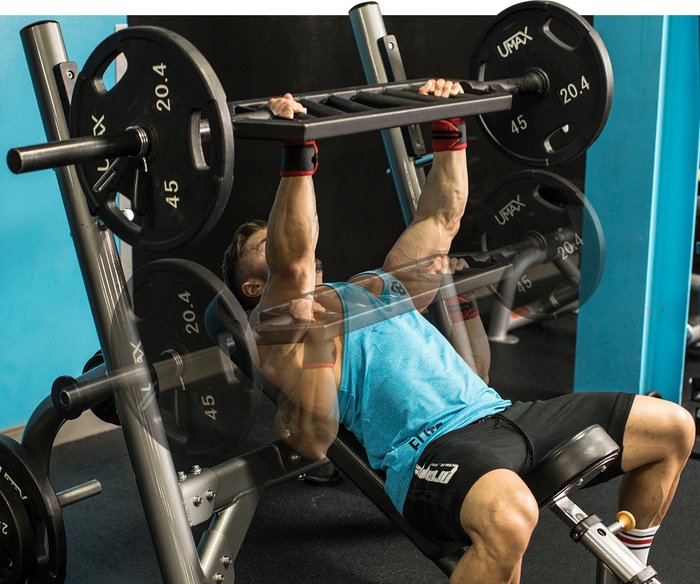
Poston uses a special barbell with a neutral grip for more power and better control. Don't have access to one? Hold heavy dumbbells with a neutral grip as an alternative exercise.
"While using the neutral grip, focus on keeping your elbows tucked into your sides," recommends Poston. "Go all the way down and let the bar hit your chest. On the way up, explode as hard as you possibly can and give your chest a big squeeze at the top."
For the slow tempo dropsets, count 5 seconds on the way down, pause for a beat, then count another 5 seconds on the way up. You should feel the burn in your pecs as you slow the weight down. Pace yourself—draw out the time under tension—and get those last few reps!
Machine Chest Fly
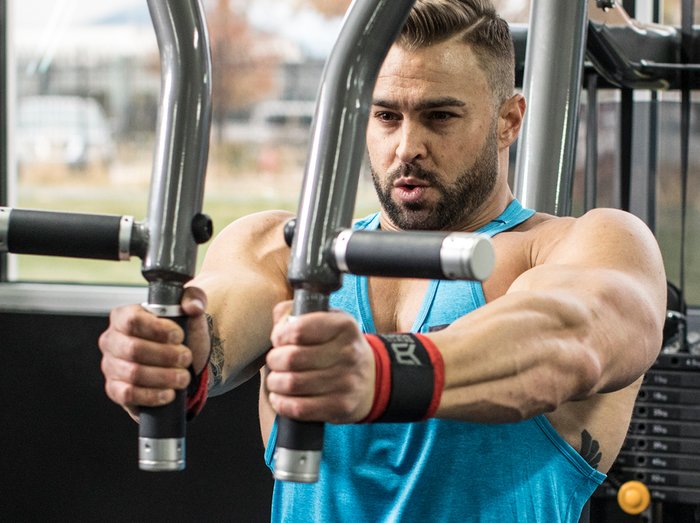
This move allows for some isolation of the pecs. Poston has his unique form recommendation for machine flies: Keep your chest up and out as far as possible, stretch the chest as you fly, then squeeze into the repetition.
Resistance-Band Chest Fly
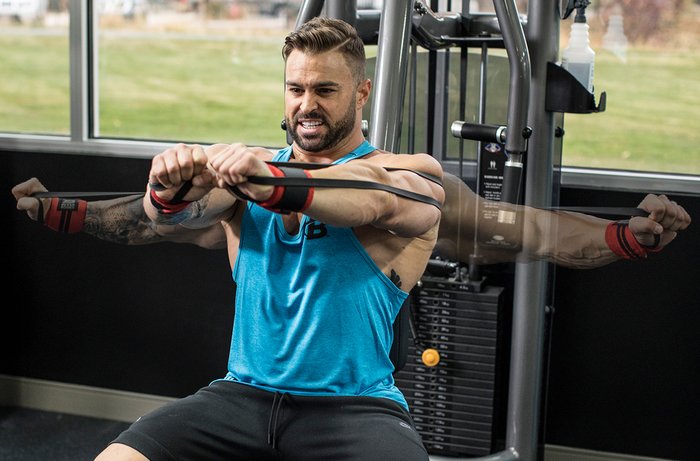
The resistance band makes this move more explosive than the machine fly. After you've done your machine flyes, wrap the resistance band around the back of the machine and perform the exact same movement, this time using the band's elasticity to focus on squeezing and stretching.
Using the machine and the band together allows you to fill those pecs up with as much blood as possible.
"You have stability to lift heavy using the machine," explains Poston. "Then, we add in a band, which has more range of motion and less control, so you're able to move around and hit the chest in optimal positions to get a better pump."
Low Cable Fly
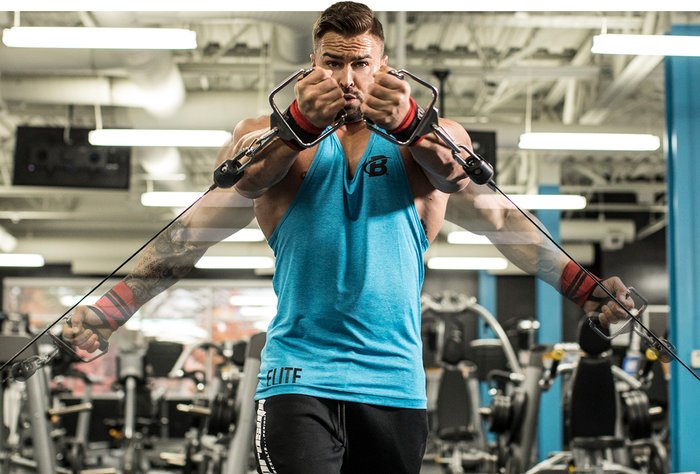
Set the cables low. Keep your chest high as you squeeze your arms up to chest height.
"When you come to a peak contraction, I want to see that chest pumped up as high as you possible can," urges Poston. "Don't let that chest sink in!"
Use intermittent stretching to add a better pump to this final chest exercise. For each stretch, hold the handles at the low position and simply move your body weight forward to stretch your chest out.
Poston recommends stretching 3-4 times during every high-rep set. "My body tends to respond best to stretching every 5 reps," he says.

